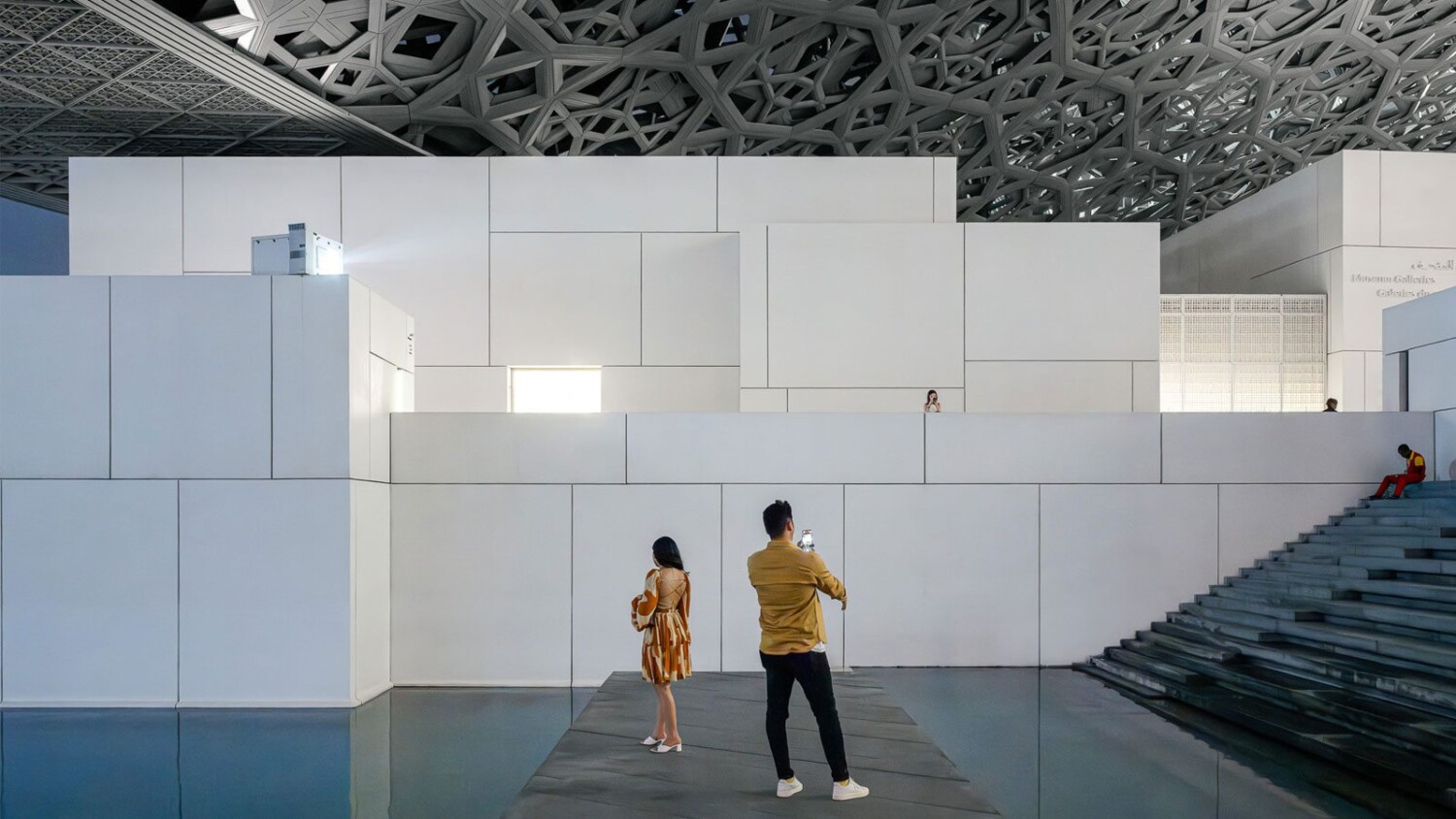Untethered – Letting Loose and Breaking Technical Constraints at the Louvre Abu Dhabi
Last November I attended the opening of the second edition of the Sharjah Architecture Triennial, a new architecture event in the UAE that focuses on sustainable designs in the southern hemisphere — a really exciting opportunity to get to know the work of new upcoming architects working globally. I was there as my photographs were featured as part of the installation of the Ecuadorean practice Natura Futura presenting the project of a floating productive house. I had the opportunity to work on this while on a wider 2-month photography journey across the country, but that’s another long story.
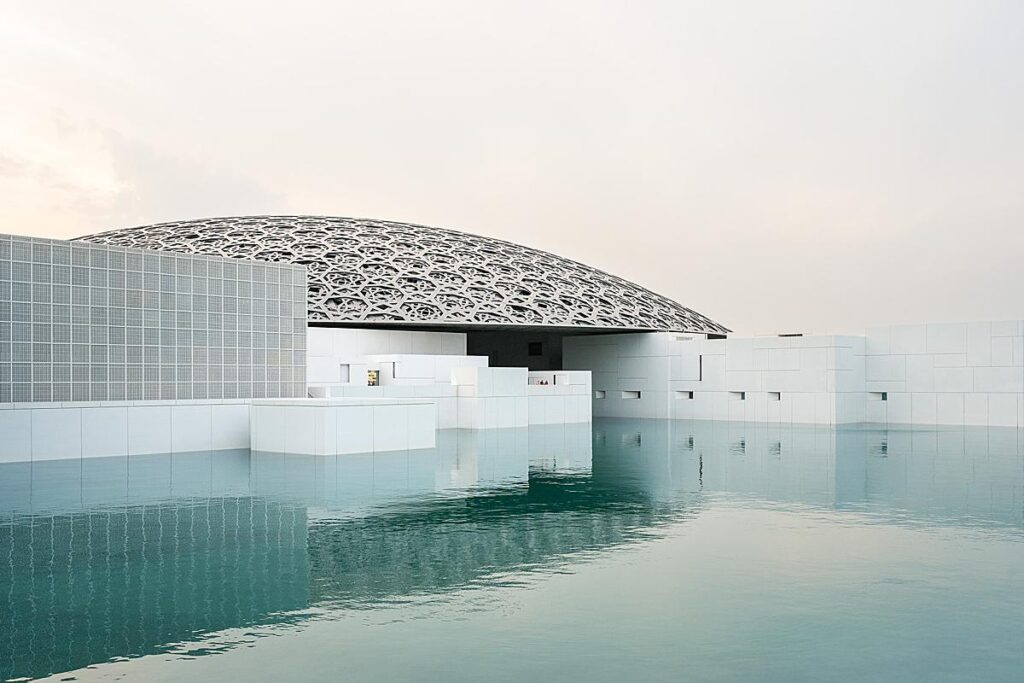
After the 3-day opening event of the triennial – which was spectacular and well worth attending – I took the extra day I had before flying back to London to get to know better the country since it was my first time visiting. With some friends, I headed from Sharjah to Abu Dhabi which notoriously hosts some remarkable pieces of contemporary architecture including the spectacular Louvre designed by the French architect Jean Nouvel which was completed back in 2017.
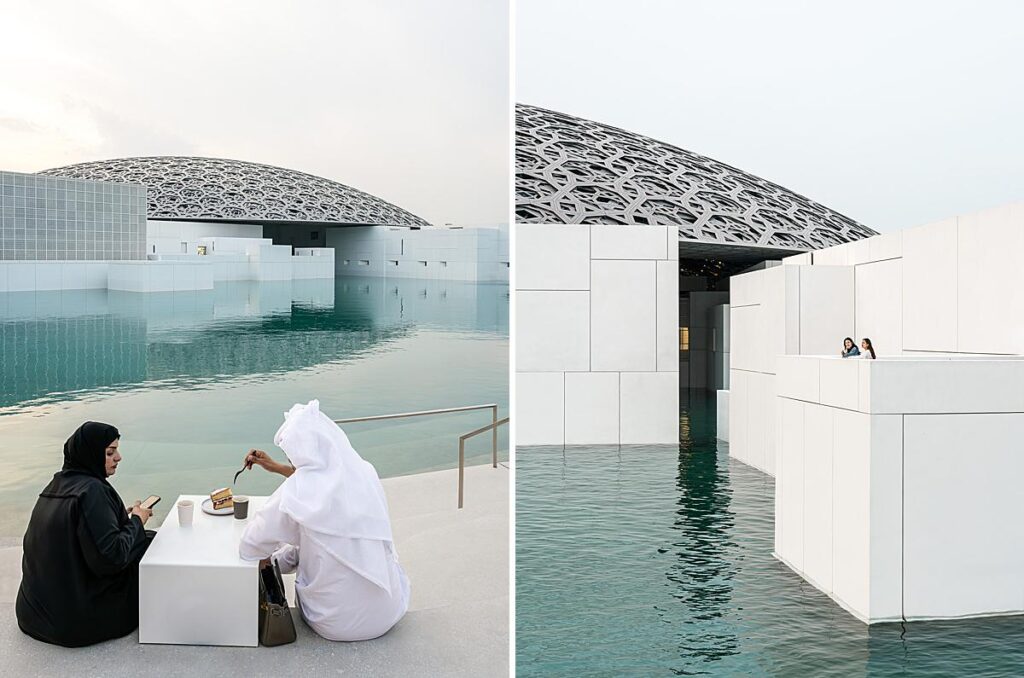
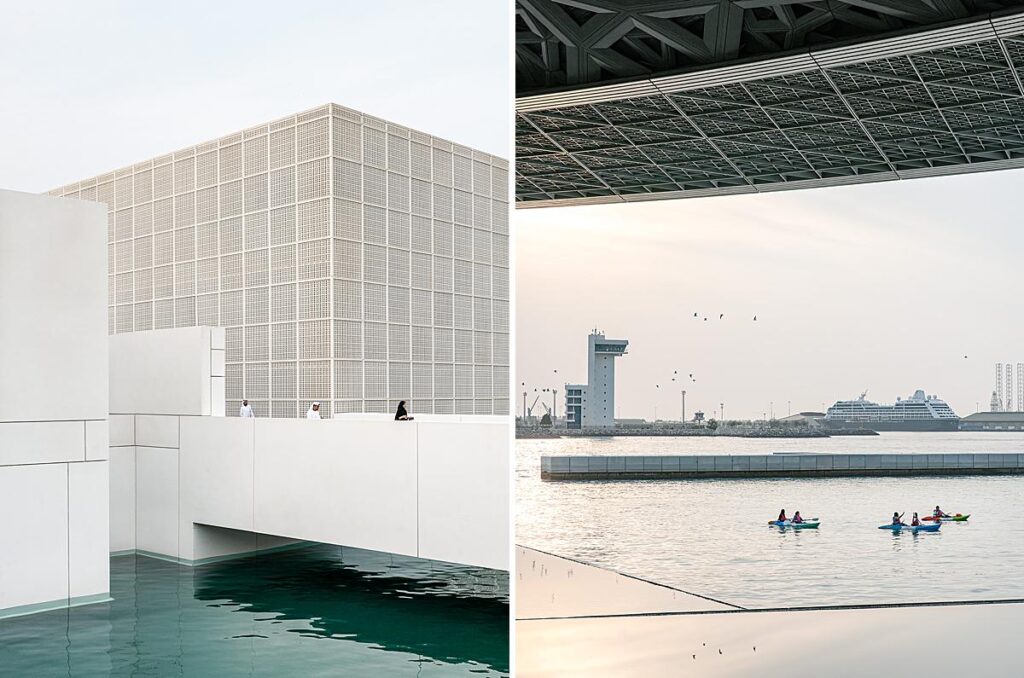
All this premise is to give some context and say that there was no preparation whatsoever on this shoot – I wasn’t even sure I would have ended up visiting it as there were many variables in place! After visiting some other interesting places such as the Sheikh Zayed Grand Mosque and the recently completed Abrahamic Family House designed by David Adjaye, I arrived at the museum around 4 p.m.
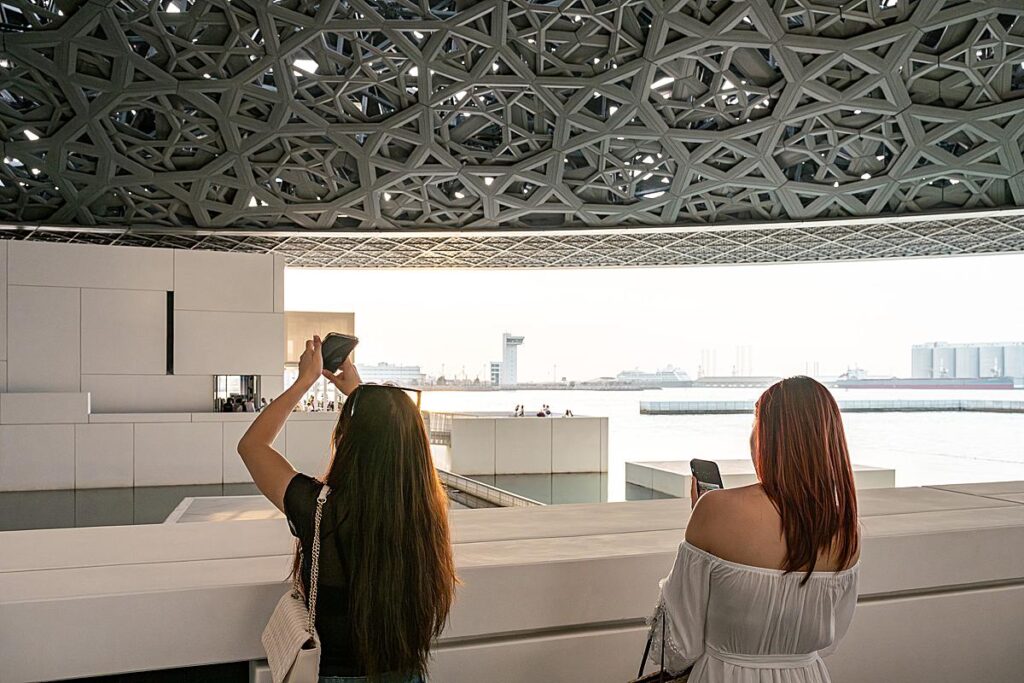
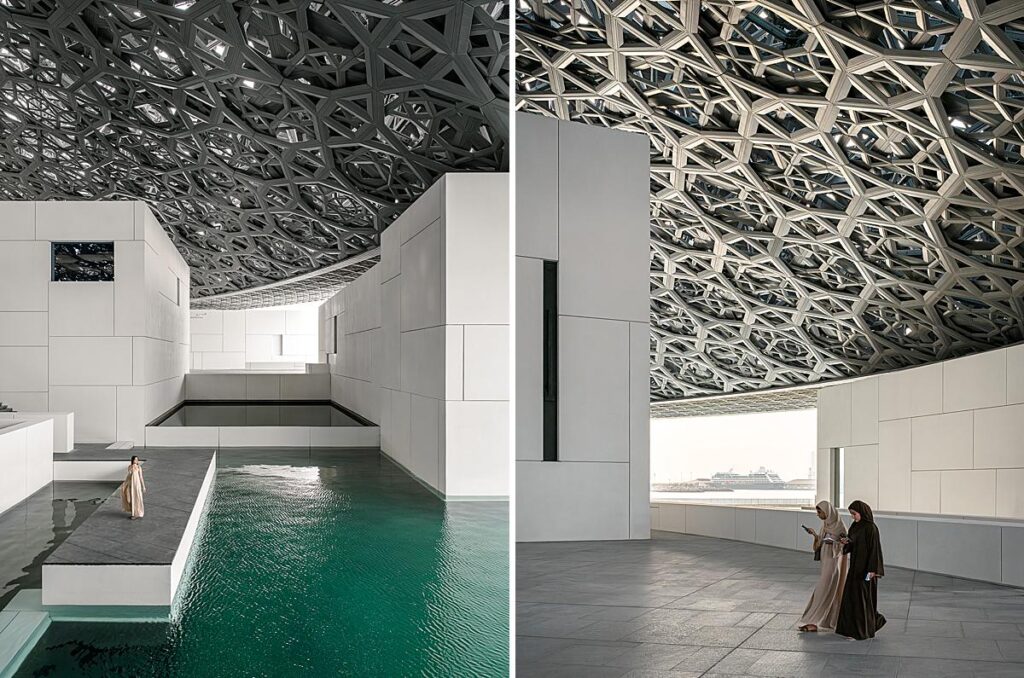
I saw pictures of the architecture before, but as in most cases, the real-life experience is a whole different thing. I was astonished by the games of light, geometries and the colour of the water. I’m sorry but I have to say that the actual exhibition almost lost relevance compared to the museum itself!
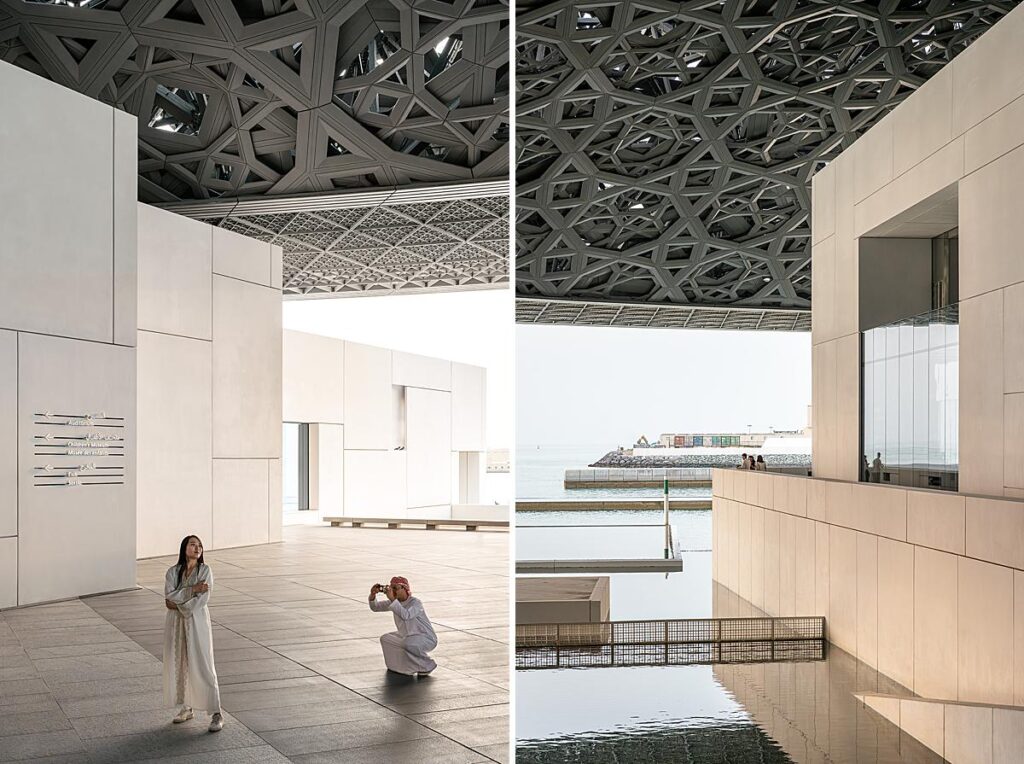
I instinctively started taking some photographs but the light was not great at the beginning. Luckily it changed after a bit of waiting – but I only had about one hour and a half until sunset so I just decided to roll. I found particularly compelling the interaction that people had with the spaces created by the architecture, lots of visitors exploring the out-of-scale spaces and the beams of light filtering through the iconic dome. A perfect place for the selfie generation, the walkways become catwalks for visitors. You can even see people queueing to have their moment in the perfect spot.
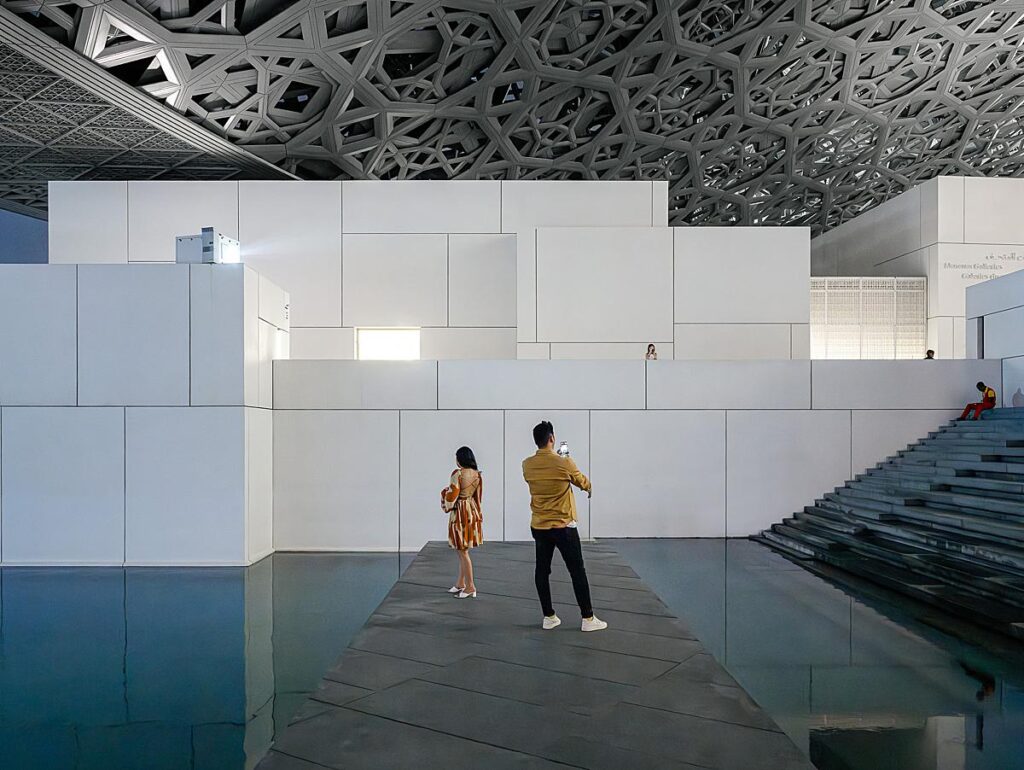
With no scouting, very little time, and minimal gear I started taking some pictures around, trying to show the people/architecture relationship which to me is an important ingredient for a successful set of pictures -especially in public projects like this one. No tripod, no shift lenses, no tethering, no models, just a camera and my 24-70mm lens and nothing else, literally. And I really enjoyed it!
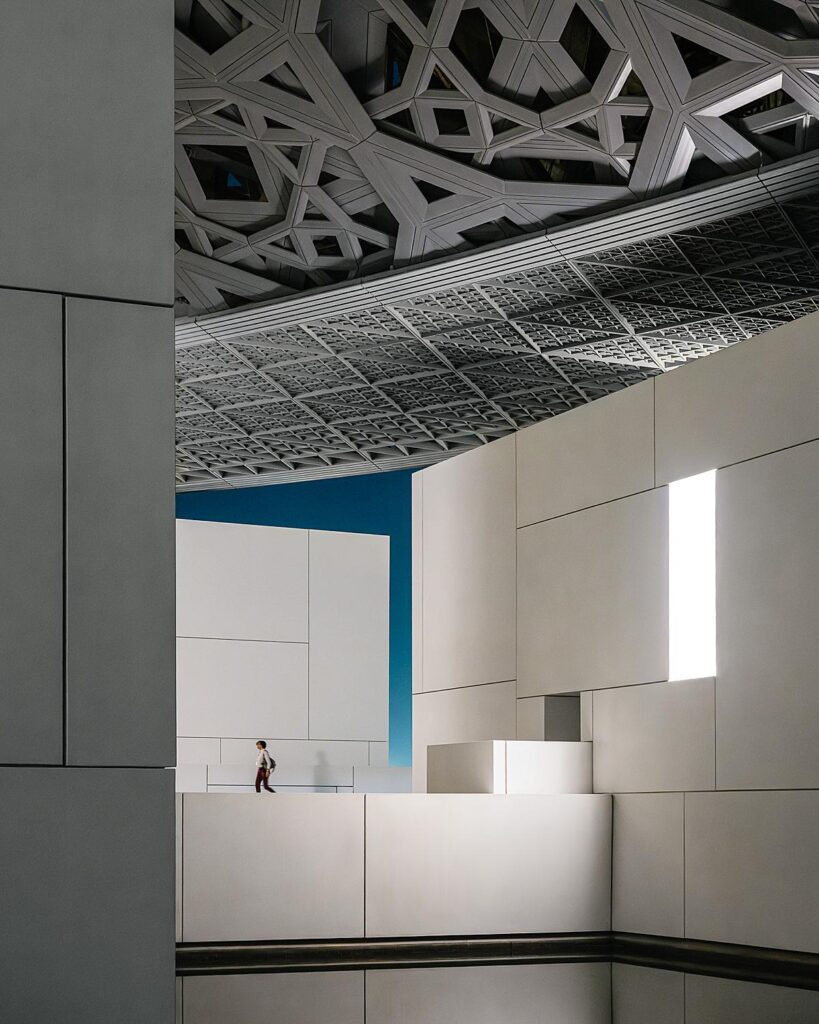
I feel that sometimes we get caught up too much in the preparation of the shoot and the technicalities of our job, that we can lose the connection with the subject. That can be reflected in the result of the work we produce, and I’ve been guilty of that myself many times. These experiences help me regain the freedom of letting loose and breaking the technical constraints that architecture photography dictates and enjoy the process much more than I normally would, leaving also a bit of surprise when I go to the editing where I can find that some images I thought were not great were actually interesting, and others I was sure I nailed where annoyingly blurry and not usable, but that’s part of the challenge.
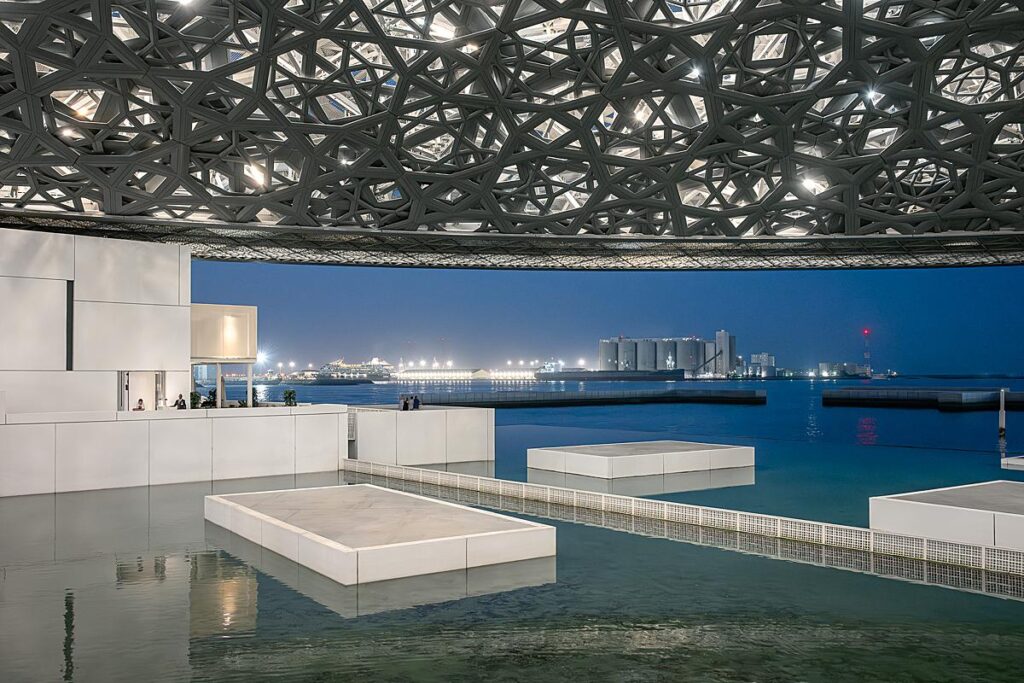
APALMANAC would like to thank Francesco Russo for contributing this piece. You can find Francesco’s work at francescorussophoto.com and on Instagram @francescorussophoto.
